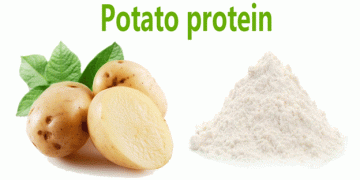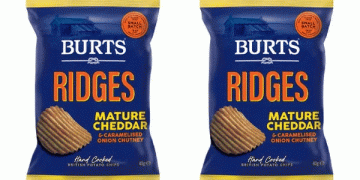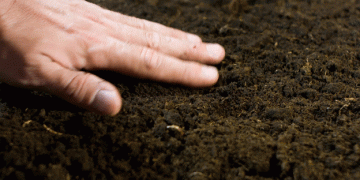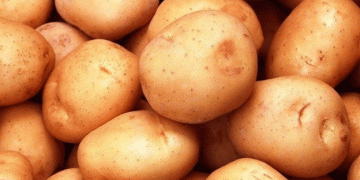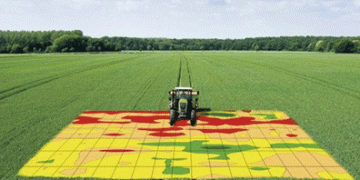The tuber flea beetle species Epitrix papa Orlova-Bienkowskaja (Coleoptera: Chrysomelidae: Alticinae) is a new exotic pest of potato in Europe, present in Portugal and Spain. In Portugal, E. papa was probably introduced around 2004 but only emerged as a pest in 2008, when it invaded an important cropping region in the central western Portugal. In this region, several potato crops are grown annually, allowing for an abundant food supply for the species to breed. In 2012, the species was classified as a quarantine organism in the European Union (EU), subject to official regulations for preventing its spread and introduction into the remaining EU countries. The species was initially identified as the North-American Epitrix similaris Gentner but was later recognized as a new species (E. papa) of unknown origin. Studies on its biology and ecology are scarce. The life cycle, patterns of tuber damage and the suitability of different host plants for the reproduction of E. papa have been investigated in the laboratory. The life cycle and behaviour of E. papa are similar to those of two economically important American tuber flea beetle species, Epitrix tuberis Gentner and Epitrix yanazara Bech., present, respectively, in North America (U.S.A. and Canada) and in South America (Peru) . The females lay their eggs in the soil and the larvae feed on roots, stolons and tubers of the host plants. When they complete their development, the larvae stop feeding, abandon the root zone and build a pupation chamber with soil particles, where they develop into adults. The new adults emerge from the soil and search for plants for feeding. They chew minute circular holes in the leaves, originating a shot-hole pattern that has no important impact on the crop’s growth or quality. By contrast, the winding furrows produced in the surface of tubers by the larvae have a marked negative visual impact, which may cause the rejection of potato consignments.
The phenology of the populations of E. papa is not well understood. The main reason is the lack of efficient traps and reliable cost-effective techniques for estimating the abundance of adults. For example, the monitoring programmes developed in Canada for estimating the population density of the closely related species E. tuberis have high associated costs. This is mainly because such programmes require the expertise of trained operators and also need to be carried out on a weekly basis. The accuracy of the estimates was also found to be highly dependent on a number of environmental variables that are difficult to standardize, such as plant height, weather conditions and time of the day. A second reason is the capacity of species with respect to exploiting alternative hosts when potato crops are not available. On these hosts, mainly blacknightshade (Solanum nigrum L.) and aubergine (Solanum melongena L.), E. papa does not cause economic damage and hence no inspection is carried out and the insects remain undetected. Finally, an additional reason is that E. papa coexists in Portugal with a morphologically similar tuber flea beetle species Epitrix cucumeris (Harris), from which it cannot be distinguished in the field . This uncertainty about the phenology and seasonal abundance of E. papa prevents the development of a sound ecological basis for control measures.
In Canada, the pest management strategy is oriented to the detection and drastic control of the overwintered adults and first-generation larvae, aiming at indirectly controlling the next generation , of which the larvae cause the most economically important damage . This is achieved with preventive cultural techniques, complemented by the application of soil and foliar insecticides during the potato growing season . The high efficiency of cultural measures, namely crop rotation and the removal of crop residues and weedy hosts, for controlling the build-up of E. tuberis populations between seasons, and thus minimizing the population size of the overwintered beetles, has been demonstrated previously. Insecticides are applied when the population density of adults reaches the established economic thresholds.
In Portugal, a similar strategy is recommended for controlling Epitrix spp. populations, based on preventive cultural measures, complemented by foliar insecticide sprays. Because some importing EU markets only accept zero tuber flea beetle damage, insecticide applications may start very early in spring upon plant emergence, in crops for exportation. The timing of these early sprays is based on the detection of the presence of the first overwintered beetles on the potato plants . During this period of the year, the pollinators and other beneficial insects become active and are exposed to the toxic effects of these insecticides. Delaying the early application of insecticides would reduce their negative impact on the beneficial insects, although the impact of such delay on the overall control of pest damage still remains unknown.
Photo: EPPO (2024) EPPO Global Database. https://gd.eppo.int
Reference: Boavida, C., Santos, M. and Naves, P. (2019), Biological traits of Epitrix papa (Coleoptera: Chrysomelidae: Alticinae), a new potato pest in Europe, and implications for pest management. Agr Forest Entomol, 21: 379-387. https://doi.org/10.1111/afe.12344


